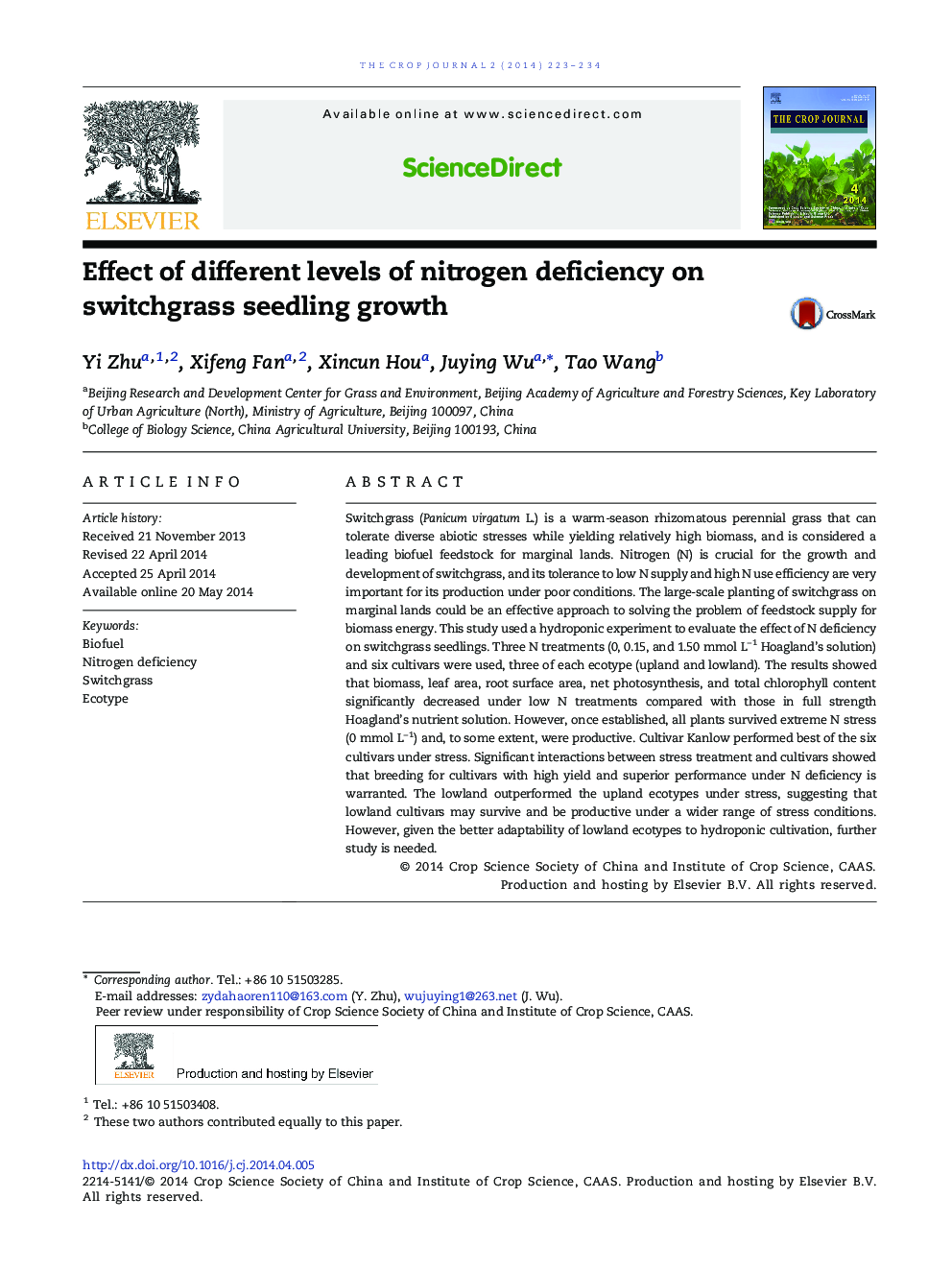| Article ID | Journal | Published Year | Pages | File Type |
|---|---|---|---|---|
| 2079552 | The Crop Journal | 2014 | 12 Pages |
Switchgrass (Panicum virgatum L.) is a warm-season rhizomatous perennial grass that can tolerate diverse abiotic stresses while yielding relatively high biomass, and is considered a leading biofuel feedstock for marginal lands. Nitrogen (N) is crucial for the growth and development of switchgrass, and its tolerance to low N supply and high N use efficiency are very important for its production under poor conditions. The large-scale planting of switchgrass on marginal lands could be an effective approach to solving the problem of feedstock supply for biomass energy. This study used a hydroponic experiment to evaluate the effect of N deficiency on switchgrass seedlings. Three N treatments (0, 0.15, and 1.50 mmol L− 1 Hoagland's solution) and six cultivars were used, three of each ecotype (upland and lowland). The results showed that biomass, leaf area, root surface area, net photosynthesis, and total chlorophyll content significantly decreased under low N treatments compared with those in full strength Hoagland's nutrient solution. However, once established, all plants survived extreme N stress (0 mmol L− 1) and, to some extent, were productive. Cultivar Kanlow performed best of the six cultivars under stress. Significant interactions between stress treatment and cultivars showed that breeding for cultivars with high yield and superior performance under N deficiency is warranted. The lowland outperformed the upland ecotypes under stress, suggesting that lowland cultivars may survive and be productive under a wider range of stress conditions. However, given the better adaptability of lowland ecotypes to hydroponic cultivation, further study is needed.
